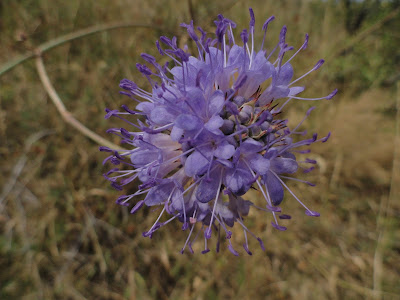
I wish I had saved that old Far Side cartoon showing the chubby guy on an endless plane in front of a sort of naked stoop with a couple steps, the cartoon labeled "the Steps of Central Asia"--this being more or less what most people think of hearing that phrase. I did mean plane in that first sentence btw.
After two really stunning trips last June and July and this August-September (thank you once again Plant Select!) my associations with Central Asia (entirely Kazkhstan and a the westernmost corner of Mongolia) are rich indeed. I deeply regret that I put off coming here so late in my life. I guess Africa and the American West (and Mexico, the Andes, Spain, Turkey etc. etc.) are a sort of compensation...but for those living in Colorado, the steppes of Central Asia are our true correlative. The landscape is so similar and the plants so perfectly suited to us that I marvel that so much of what I saw was novel and new to me (and I suspect to horticulture generally)
A case in point is the plant pictured above: Dipsacus azureus. I realize teasel might well terrify the soul of the timid, but something tells me this one is no fullonum. It appears to be perennial, and was scattered on just certain meadows in a way that suggested a reasonable perennial rather than horrendous weed to me. Only time (and a lot of cautious testing) will tell for sure: but I know no garden perennial quite like this: six or seven feet tall, with such a clear azure head of bloom, almost always sporting butterflies.
 We saw this several places widely separated on the Tian Shan from Djabagly to near Merket--a stretch of hundreds of kilometers: it is not rare in nature. But why should such a showy, dramatic plant seem not to exist in the horticultural literature? There is one measly picture of it on Google images...
We saw this several places widely separated on the Tian Shan from Djabagly to near Merket--a stretch of hundreds of kilometers: it is not rare in nature. But why should such a showy, dramatic plant seem not to exist in the horticultural literature? There is one measly picture of it on Google images...I think it's because the steppes of Central Asia are (except for a few bulbs and woodies) largely unknown to gardens in the "West". Considering that horticulture first arose in the steppe country somewhere around the highlands of Iraq-Iran-Turkey, the irony is rich.
How exciting it is to be one of the first American horticulturists to take a systematic look at this glorious region where so much of humanity traces its origins and the art of gardening (which is to say civilization) traces its start!




Nice indeed, if it gets into cultivation I would put it among a group of Solidago sempervirens that are currently in full bloom in my school garden. Glad to know you had a wonderful and successful trip!
ReplyDeleteErnie D